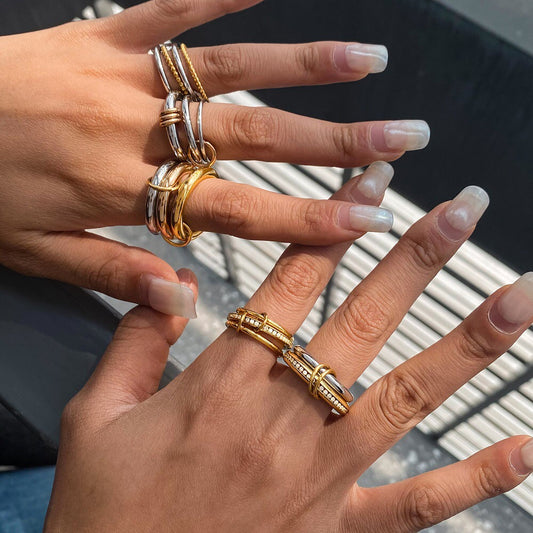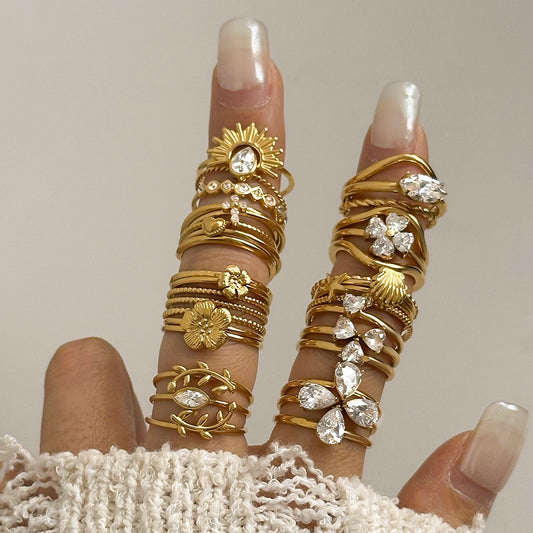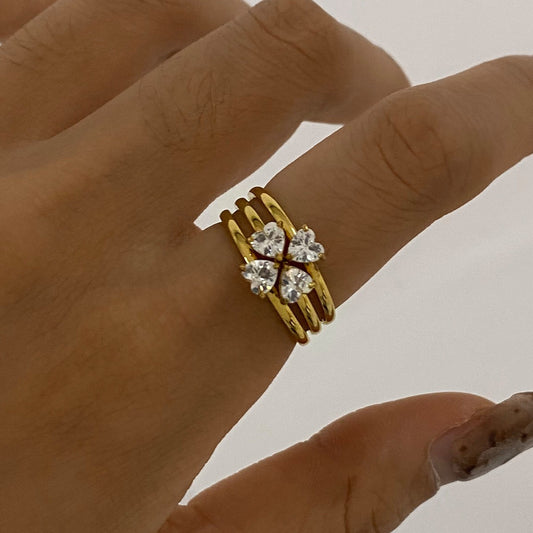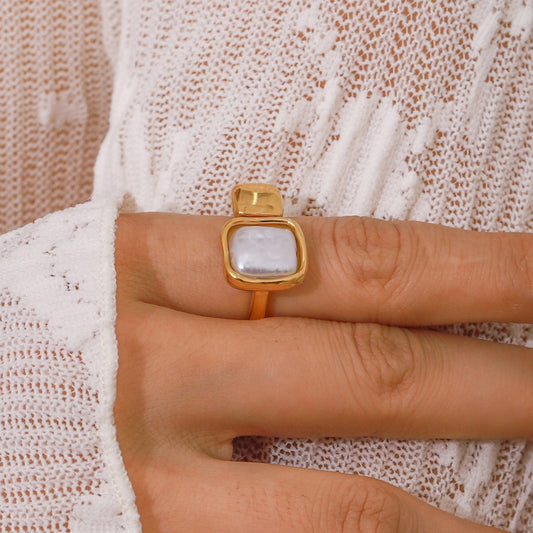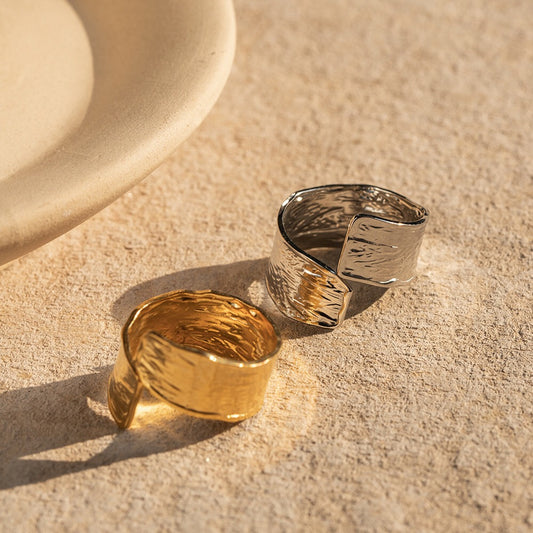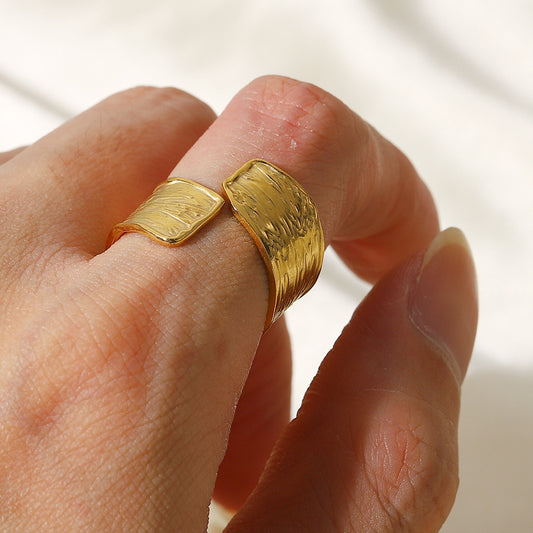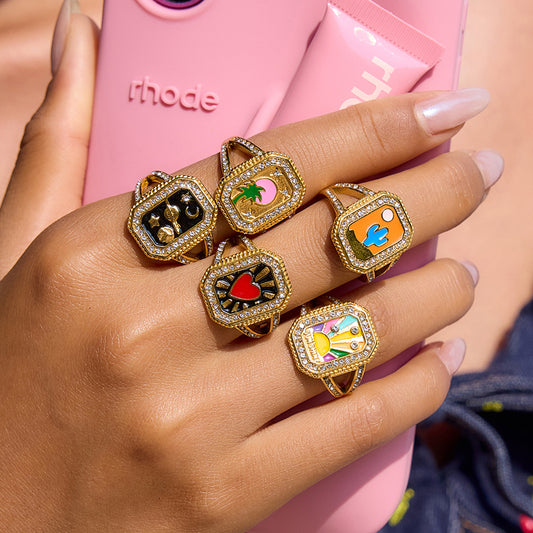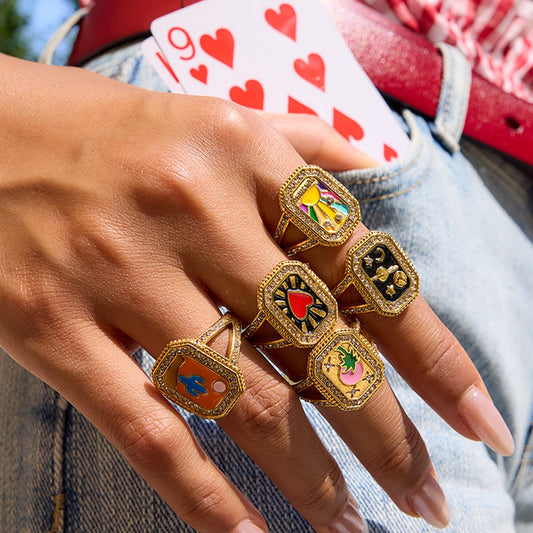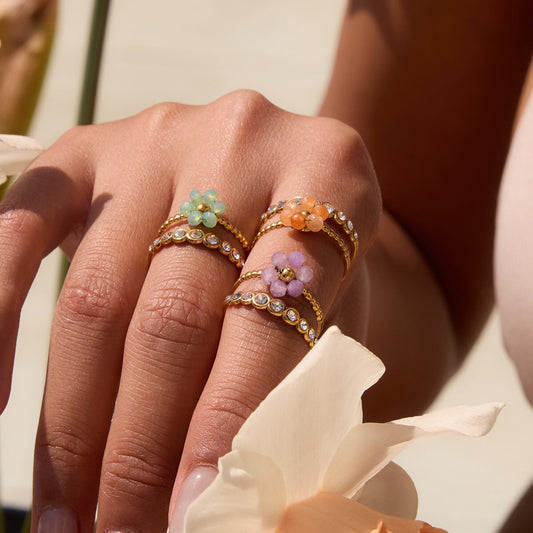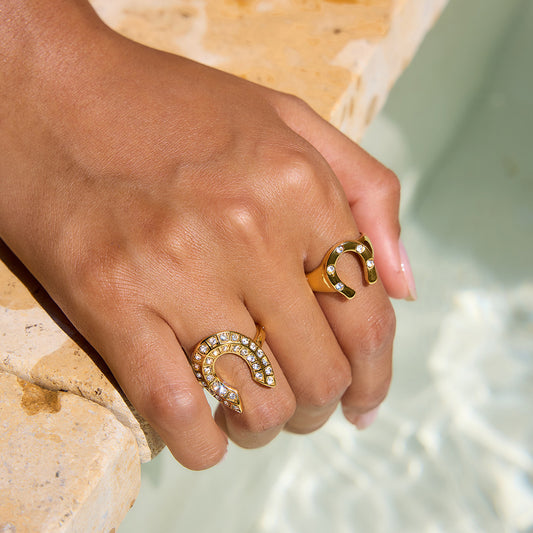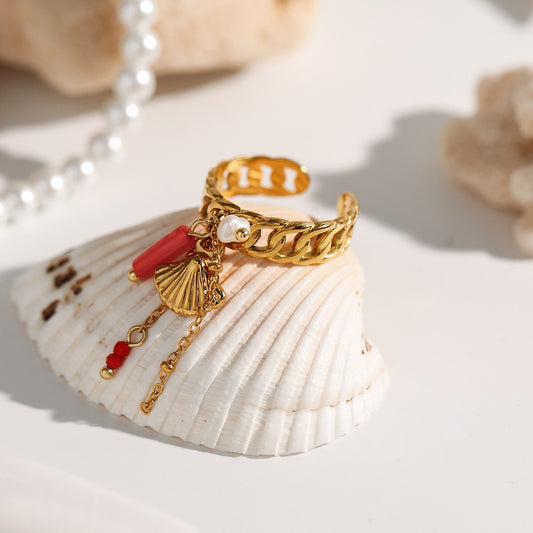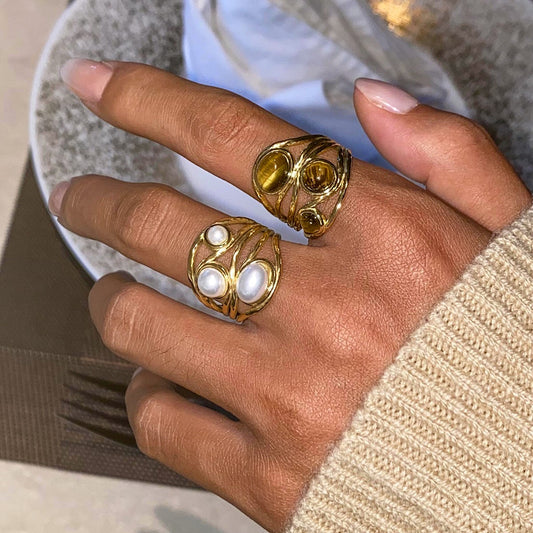An emerald cut engagement ring is the epitome of understated luxury—its clean rectangular lines, step-cut facets, and "hall of mirrors" sparkle have made it a favorite of style icons, royalty, and couples who crave elegance over flash. The global jewelry market size is projected to grow from $242.79 billion in 2025 to $343.90 billion by 2032, at a CAGR of 5.10% during the forecast period. Unlike round or princess cuts that prioritize fiery brilliance, emerald cuts showcase a diamond’s clarity and geometric beauty—making each ring feel like a wearable work of art. Whether you’re a fan of old-world charm or sleek contemporary design, an emerald cut engagement ring is a promise of forever that never feels dated.

What Is an Emerald Cut Engagement Ring?
An emerald cut engagement ring features a diamond (or gemstone) shaped into a rectangular or square silhouette with "step-cut" facets—broad, flat planes arranged in parallel rows, like the steps of a staircase. This design was originally created for emerald gemstones (to reduce pressure on their brittle structure), but its timeless appeal quickly made it a staple for diamonds. To understand its allure, let’s break down its defining traits and what sets it apart from other cuts.
Core Traits of an Emerald Cut Diamond
The emerald cut’s unique characteristics make it instantly recognizable—and endlessly desirable:
-
Geometric Silhouette: Typically rectangular (with length-to-width ratios of 1.3:1 to 1.5:1 for classic elegance; square cuts are called "princess emerald cuts" or "asscher cuts" for their square shape).
-
Step-Cut Facets: 57–58 broad facets (vs. 58 tiny facets on a round cut) create a "hall of mirrors" effect—light bounces between the flat planes, producing a cool, sophisticated glow rather than intense sparkle.
-
Clarity Focus: The large, open table (top facet) and minimal facets highlight a diamond’s clarity—flaws (inclusions) are more visible, making high-clarity emerald cuts especially prized.
-
Visual Size: The rectangular shape and wide table make emerald cut diamonds appear larger than round cuts of the same carat weight (e.g., a 1ct emerald cut looks bigger than a 1ct round cut).
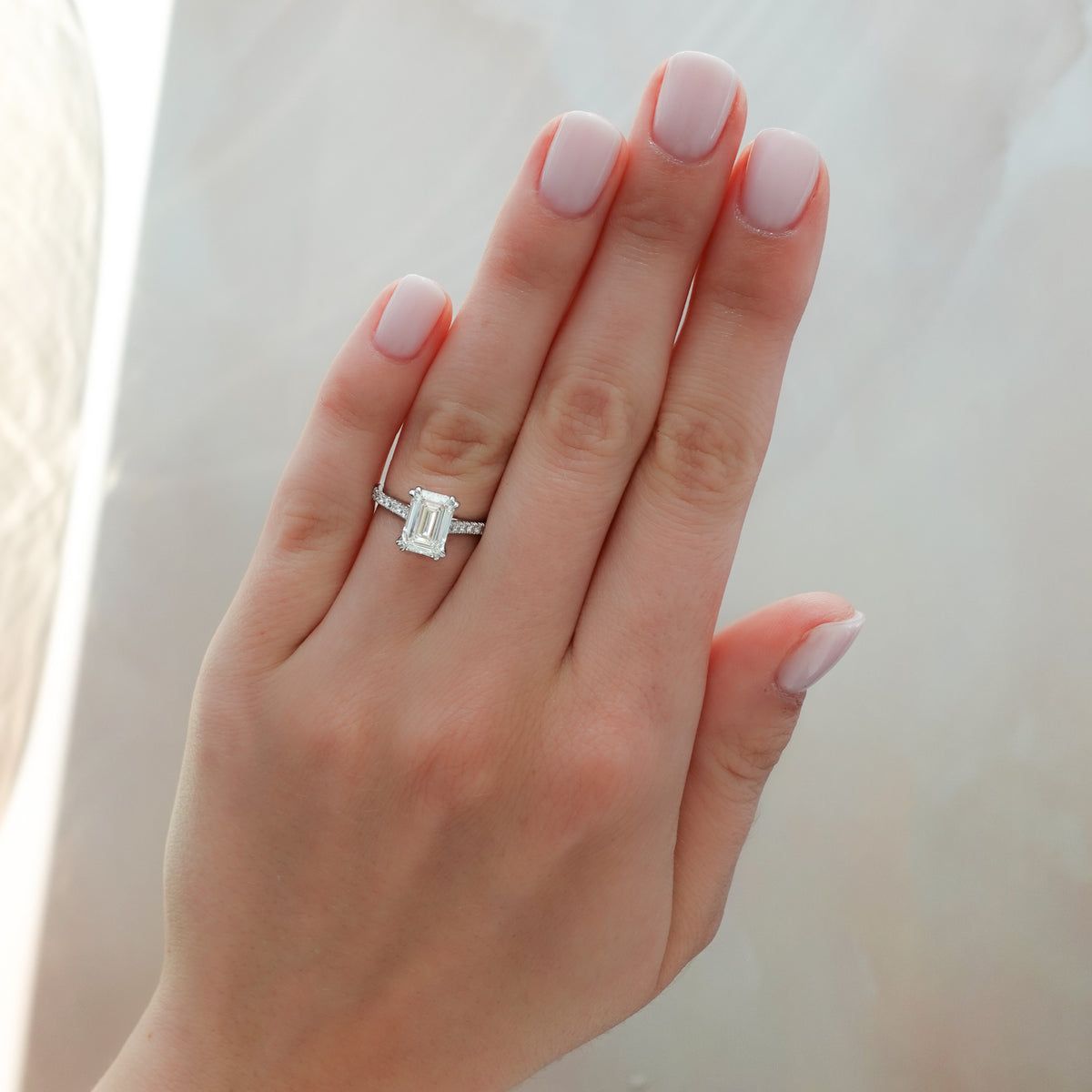
How Emerald Cut Rings Differ from Other Engagement Ring Styles
While round cuts dominate engagement rings for their sparkle, emerald cuts cater to a different aesthetic:
-
Sparkle vs. Glow: Round cuts = fiery, rainbow "fire"; emerald cuts = cool, linear "hall of mirrors" glow—ideal for couples who prefer sophistication over drama.
-
Shape Appeal: Round cuts = timeless but ubiquitous; emerald cuts = bold, geometric, and inherently stylish—perfect for making a subtle statement.
-
Setting Pairings: Round cuts work with any setting (halo, solitaire, pave); emerald cuts shine in sleek settings (solitaire, bezel, three-stone) that highlight their clean lines (busy halos can overpower their shape).
Why Choose an Emerald Cut Engagement Ring?
Emerald cut engagement rings have endured for decades because they balance heritage, style, and meaning—appealing to couples who want a ring that feels both classic and personal.
Timeless Heritage (Rooted in Art Deco Glamour)
The emerald cut rose to fame in the 1920s–1930s Art Deco era, a time of bold geometric patterns, luxury, and innovation. Its clean lines and symmetrical shape perfectly embodied the era’s "less is more" elegance, and it quickly became a favorite of Hollywood starlets and European royalty. Today, it remains a nod to that golden age of glamour—while feeling fresh enough for modern brides. A 2024 survey by Vogue Weddings found that 76% of emerald cut buyers chose the style for its "vintage-inspired sophistication."

Symbolism of Clarity & Honesty
The emerald cut’s focus on clarity isn’t just aesthetic—it’s symbolic. Because inclusions are more visible, an emerald cut diamond celebrates transparency—a metaphor for the honesty, trust, and openness at the heart of a strong marriage. For couples who value authenticity over perfection, this cut feels deeply meaningful: it doesn’t hide flaws (like a round cut might), but rather showcases the diamond’s unique character—just like a relationship.
Versatility for Every Style
Emerald cut rings adapt to nearly any aesthetic, from minimalist to bold:
-
Minimalists: A solitaire emerald cut in a thin platinum band = understated luxury.
-
Romantics: An emerald cut with a delicate pave band = subtle sparkle.
-
Vintage Lovers: An emerald cut in a yellow gold Art Deco setting = old-world charm.
-
Modernists: A square emerald cut (asscher) in a black rhodium band = edgy elegance.
They also pair beautifully with wedding bands—their flat sides sit seamlessly next to plain or pave bands, no awkward gaps required.
Popular Styles of Emerald Cut Engagement Rings
Emerald cut engagement rings come in a range of designs, each highlighting the cut’s geometric beauty while adding personal flair.

1. Solitaire Emerald Cut Ring (Minimalist Elegance)
The most classic style—letting the emerald cut’s shape and glow take center stage:
-
Design: A single emerald cut diamond (typically 0.75–2ct) set in a simple prong (4 or 6 prongs) or bezel setting. Metals: Platinum, white gold, or yellow gold (for a vintage twist).
-
Best For: Minimalists, fans of understated luxury, or couples who want the diamond to be the focal point.
-
Why It’s Loved: The clean setting emphasizes the emerald cut’s "hall of mirrors" effect—no distractions, just pure sophistication. It’s the style worn by celebrities like Beyoncé (18ct emerald cut) and Jennifer Lopez (6.1ct emerald cut).
2. Three-Stone Emerald Cut Ring (Symbolic Storytelling)
A meaningful twist that adds depth and sentiment:
-
Design: A central emerald cut diamond flanked by two smaller gemstones (often baguette-cut diamonds, sapphires, or emeralds) in a shared setting. The three stones symbolize "past, present, future."
-
Best For: Sentimental couples, those celebrating a long relationship, or anyone who wants to add color (via sapphires/emeralds) without overwhelming the central diamond.
-
Why It’s Loved: The baguette side stones mirror the emerald cut’s linear facets, creating a cohesive, elegant look—perfect for honoring your journey together.
3. Emerald Cut with Pave Band (Subtle Sparkle)
For couples who want a little extra shine without sacrificing the emerald cut’s sophistication:
-
Design: A central emerald cut diamond set in a prong setting, paired with a band covered in tiny pave diamonds (typically 0.01–0.03ct each). Metals: White gold or platinum (to enhance the "cool glow" of the emerald cut).
-
Best For: Lovers of subtle sparkle, those who want a ring that transitions from day (office) to night (date nights), or anyone who finds solitaire rings too plain.
-
Why It’s Loved: The pave band adds sparkle without competing with the emerald cut—its tiny diamonds complement the central stone’s glow, creating a luxe, cohesive look.
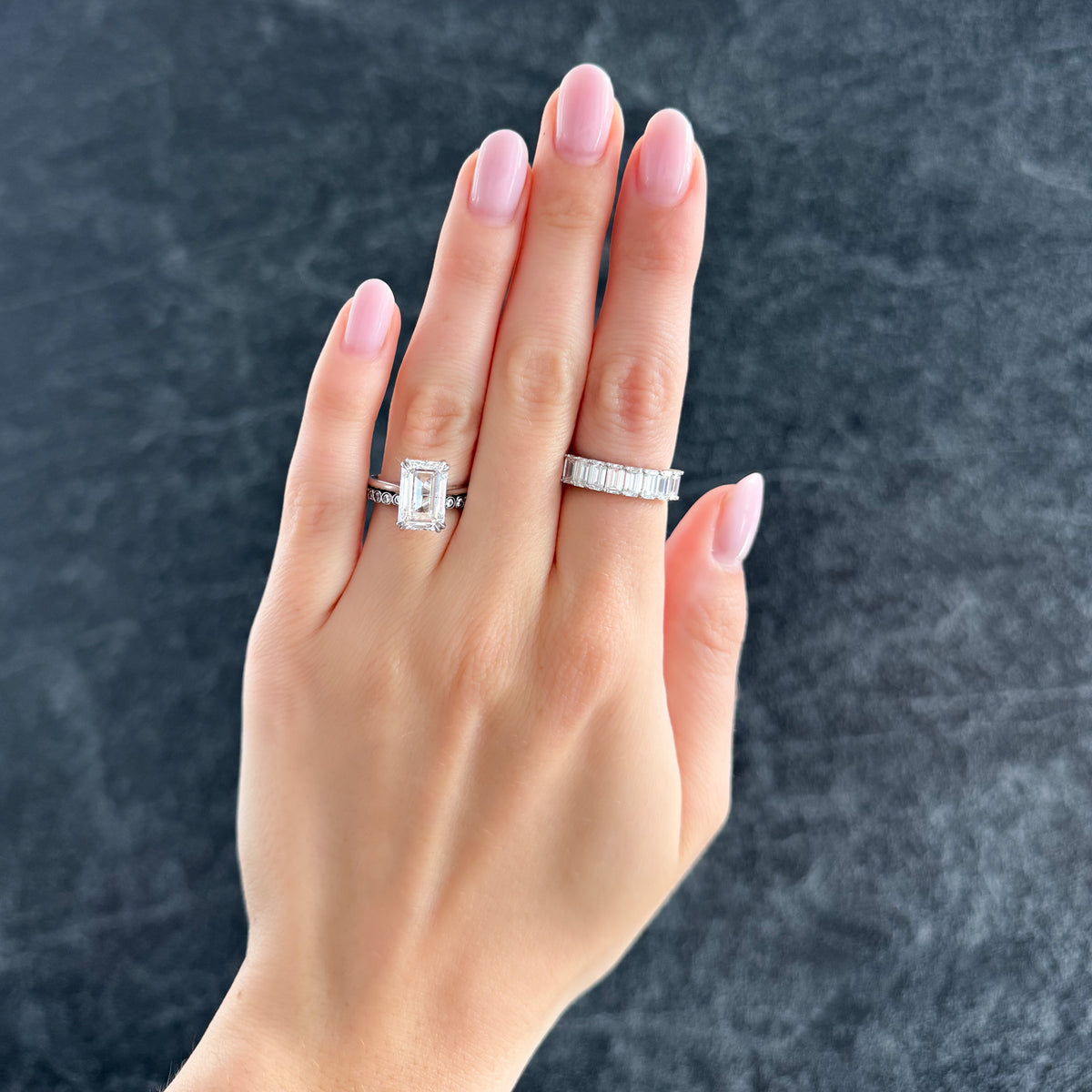
4. Vintage-Inspired Emerald Cut Ring (Art Deco Glamour)
A nod to the emerald cut’s golden age—perfect for lovers of retro style:
-
Design: An emerald cut diamond set in a yellow gold or rose gold band with Art Deco details: filigree metalwork, milgrain edges (tiny beaded detailing), or geometric side accents (e.g., triangular or rectangular metal motifs).
-
Best For: Fans of 1920s–1930s style, collectors of vintage jewelry, or couples who want a ring with character and history.
-
Why It’s Loved: The vintage details enhance the emerald cut’s heritage, making the ring feel like a one-of-a-kind heirloom—even if it’s new.
5. Colored Gemstone Emerald Cut Ring (Bold & Unique)
Emerald cuts aren’t just for diamonds—they showcase colored gemstones beautifully:
-
Design: An emerald cut gemstone (emerald, sapphire, ruby, or morganite) set in a metal that complements its color (e.g., yellow gold for emeralds, white gold for sapphires).
-
Best For: Couples who want to skip traditional diamonds, those with a favorite color, or anyone who wants a ring that stands out.
-
Why It’s Loved: The step-cut facets of the emerald shape bring out the depth and hue of colored gemstones—an emerald cut emerald, for example, looks rich and vibrant, with none of the "muddiness" of other cuts.
How to Choose the Perfect Emerald Cut Engagement Ring
Selecting an emerald cut engagement ring requires focusing on the cut’s unique needs (clarity, proportions) and aligning it with your style and budget. Follow these steps to find your ideal ring:
Step 1: Prioritize Clarity (The Emerald Cut’s Secret Sauce)
Because the emerald cut’s large table and minimal facets highlight inclusions, clarity is more important here than in other cuts. Aim for:
-
VS2 or Higher: Very slightly included (VS2) or higher clarity (VS1, VVS2, VVS1, FL) ensures flaws aren’t visible to the naked eye.
-
Avoid SI1 or Lower: Slightly included (SI1) diamonds may have visible flaws in an emerald cut—save these for round cuts, where facets hide inclusions.
Step 2: Choose the Right Proportions (Length-to-Width Ratio)
The emerald cut’s rectangular shape lives or dies by its proportions. Pick a ratio that fits your style:
-
Classic Elegance: 1.3:1 to 1.5:1 (e.g., a 1.4ct diamond with a length of 7mm and width of 5mm)—the most popular ratio, balancing length and width.
-
Slim & Modern: 1.6:1 or higher (longer, narrower shape)—ideal for those who want a ring that elongates the finger.
-
Square Charm: 1:1 (square emerald cut, often called an asscher cut)—perfect for lovers of geometric, modern style.
Step 3: Select a Setting That Highlights the Cut
Avoid busy settings that overpower the emerald cut’s clean lines. Stick to:
-
Prong Settings: 4 or 6 prongs (4 prongs show more of the diamond; 6 prongs offer more security). Opt for thin prongs (to avoid blocking facets).
-
Bezel Settings: A metal rim that wraps around the diamond—great for active lifestyles (no prongs to catch) and modern aesthetics.
-
Three-Stone or Pave: As noted earlier, these add detail without overwhelming the cut—just ensure side stones (baguettes, pave) complement the emerald cut’s linear shape.
Step 4: Pick the Right Metal
The metal should enhance the emerald cut’s glow and match your style:
-
Platinum/White Gold: Cool metals amplify the emerald cut’s "hall of mirrors" effect—perfect for modern, minimalist looks.
-
Yellow Gold: Warm metal adds vintage charm, making it ideal for Art Deco-inspired rings or colored gemstone emerald cuts (e.g., emeralds, rubies).
-
Rose Gold: Romantic and trendy, rose gold pairs beautifully with pink or peach gemstones (morganite, pink sapphire) or diamonds for a soft, feminine look.
Step 5: Set a Realistic Budget
Emerald cut engagement rings range in price from \(2,000 (0.75ct, VS2 clarity, white gold solitaire) to \)50,000+ (3ct+, VVS1 clarity, platinum vintage setting). Key budget tips:
-
Prioritize Clarity Over Carat: A smaller, high-clarity emerald cut will look more elegant than a larger, low-clarity one.
-
Consider Lab-Grown Diamonds: Lab-grown emerald cuts cost 30–50% less than natural diamonds and have the same beauty and durability.
-
Skip Unnecessary Details: Pave bands or halo settings add cost—stick to a solitaire or three-stone design to save.
How to Care for Your Emerald Cut Engagement Ring
Proper care keeps your emerald cut ring looking its best for decades:
Daily Care Tips
-
Remove Before Activities: Take off the ring before swimming (chlorine damages metal and dulls diamonds), showering (soap builds up on facets), working out (sweat tarnishes metal), or doing chores (cleaning products scratch metal).
-
Wipe After Wear: Gently wipe the diamond and band with a soft microfiber cloth to remove oil, lotion, or dirt—this preserves the "hall of mirrors" glow.
-
Avoid Harsh Chemicals: Perfume, hairspray, and nail polish remover can damage metal and cloud diamonds—apply these before putting on your ring.
Weekly Deep Cleaning
-
Mix warm water with a drop of mild dish soap (or diamond-specific cleaner) in a small bowl.
-
Soak the ring for 10–15 minutes—this loosens dirt from the emerald cut’s facets and setting.
-
Gently scrub the diamond with a soft-bristled toothbrush (focus on the step facets and the back of the diamond, where dirt hides).
-
Rinse under warm running water and pat dry with a microfiber cloth.
-
For extra shine: Polish the metal band with a metal-specific cloth (platinum cloth for platinum, gold cloth for gold). Avoid scrubbing the diamond too hard—you might scratch the facets.
Annual Maintenance
-
Jeweler Checkup: Take your ring to a jeweler once a year to inspect prongs (loose prongs can cause the diamond to fall out), clean the diamond professionally, and polish the band.
-
Insurance: Ensure your ring is insured (most homeowners’ policies cover jewelry, but you may need a rider for high-value pieces). Keep the diamond certificate (GIA, AGS) in a safe place.
Frequently Asked Questions About Emerald Cut Engagement Rings
Q1: Are emerald cut diamonds more fragile than round cuts?
A: No—emerald cut diamonds have the same durability (10 on the Mohs scale) as round cuts. However, their corners are slightly more vulnerable to chipping (due to the rectangular shape). A bezel setting or protective prong design can mitigate this risk.
Q2: Do emerald cut engagement rings look good on all finger shapes?
A: Yes! The rectangular shape elongates short fingers, while the balanced proportions complement long fingers. Square emerald cuts (asscher) look great on wider fingers, as they add symmetry.
Q3: Can I wear an emerald cut engagement ring every day?
A: Absolutely—with proper care. Opt for a bezel or 6-prong setting for added security, and remove it during high-impact activities to avoid chipping the corners.
Q4: Are emerald cut rings only for traditional brides?
A: No—while they have vintage roots, emerald cut rings are incredibly versatile. Pair them with modern metals (platinum) or colored gemstones (sapphires) for a contemporary look that feels anything but traditional.
Conclusion: Elegance That Lasts a Lifetime
An emerald cut engagement ring is more than a piece of jewelry—it’s a statement of sophistication, a nod to heritage, and a symbol of the honest, enduring love you share. Its clean lines, cool glow, and timeless appeal make it a ring you’ll be proud to wear every day, and pass down as an heirloom.
Whether you choose a minimalist solitaire, a vintage-inspired three-stone design, or a bold colored gemstone, an emerald cut engagement ring is a promise of forever—one that’s as unique and beautiful as your love story.
Here’s to a lifetime of elegance—one step-cut facet at a time.






